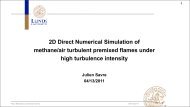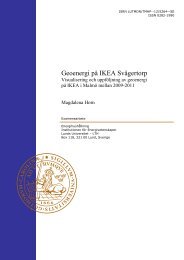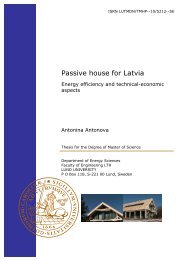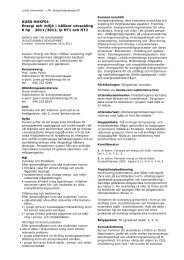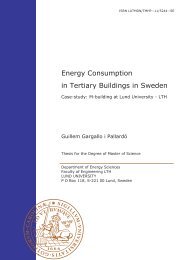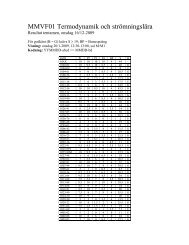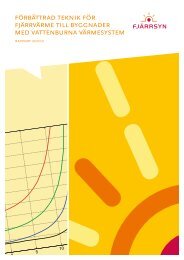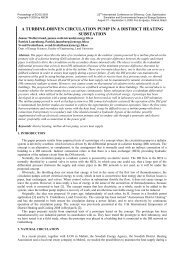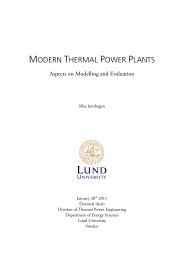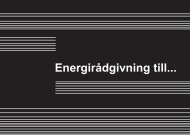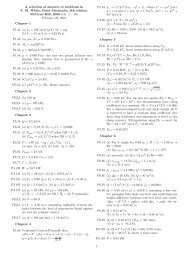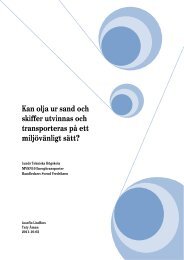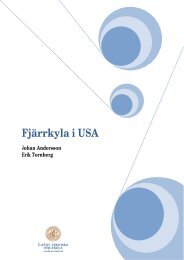Thesis for degree: Licentiate of Engineering
Thesis for degree: Licentiate of Engineering
Thesis for degree: Licentiate of Engineering
You also want an ePaper? Increase the reach of your titles
YUMPU automatically turns print PDFs into web optimized ePapers that Google loves.
model is presented after the data conversion from the original digital image (Figure 3.1) and<br />
the choice <strong>of</strong> border between pore and solid, i.e., white and black, was chosen to obtain a<br />
porosity <strong>of</strong> 40%.<br />
Figure 3.2: Image <strong>for</strong> LBM by two colors, black (solid) and white (pore), with a porosity <strong>of</strong> 40%.<br />
The conversion process <strong>for</strong> three colors, namely white, grey and black, was also per<strong>for</strong>med in<br />
Python to create a matrix functional <strong>for</strong> MATLAB. To distinguish the three phases <strong>for</strong> the<br />
pore and the two solid types, a phase function is defined at each pixel (z) as:<br />
(3.2)<br />
In Figure 3.3 the real image <strong>of</strong> the XCT scan is shown. In Figure 3.4 and 3.5 the three-colorconversion<br />
is implemented where the choice <strong>of</strong> border between pore and solid (both grey and<br />
black) was chosen to obtain a porosity <strong>of</strong> 40% and 60%, respectively. The black colored<br />
patches represents YSZ, the grey Ni and the white represents the pores.<br />
Figure 3.3: Digital image <strong>of</strong> a Ni/YSZ anode.<br />
23



